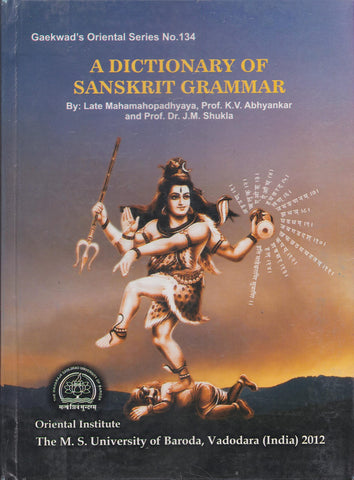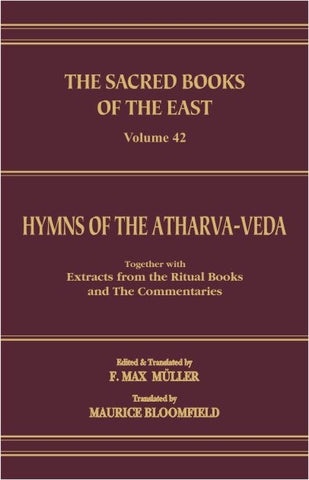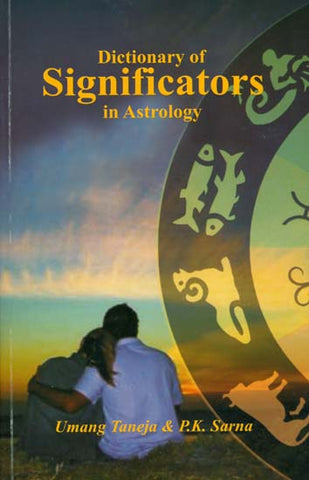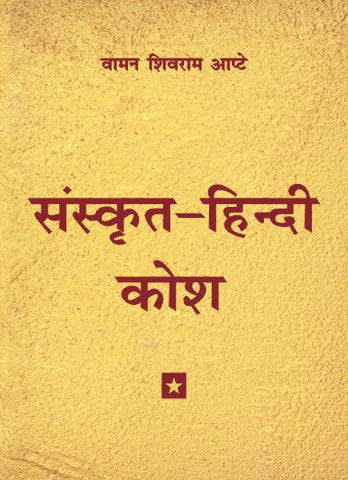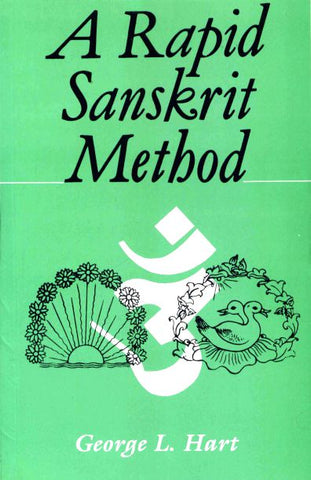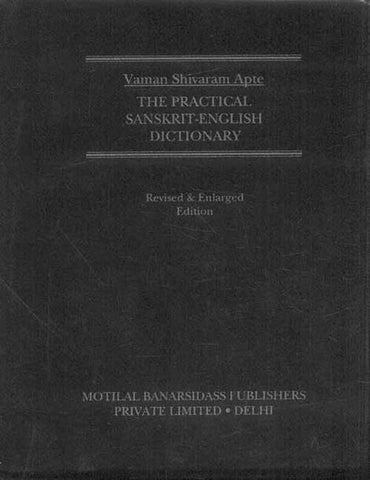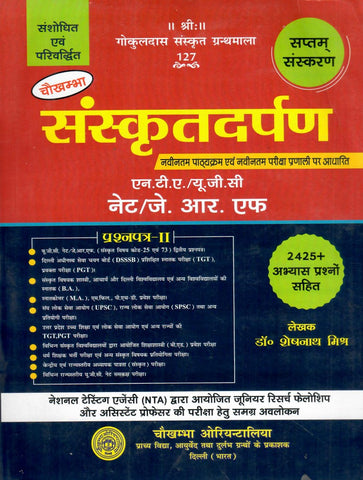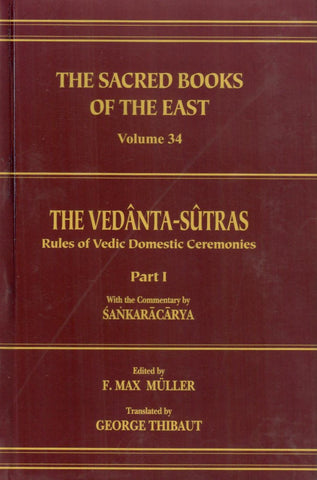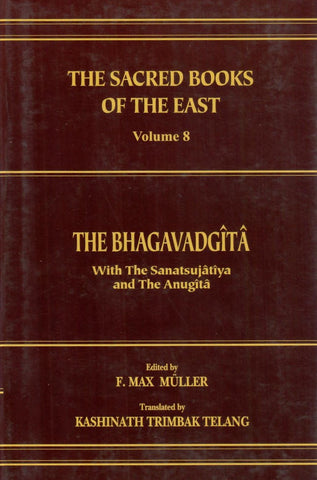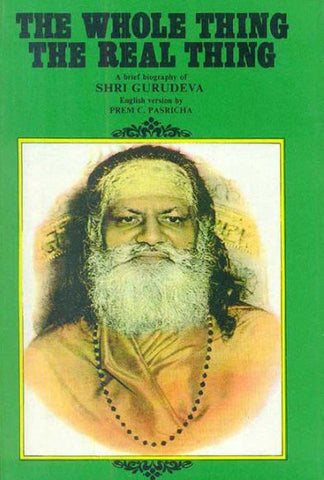Your cart is empty now.
The origin and development of the Gaina sect is a subject on which some scholars still think it safe to speak with a sceptical caution, though this seems little warranted by the present state of the whole question; for a large and ancient literature has been made accessible, and furnishes ample materials for the early history of the sect to all who are willing to collect them. Nor is the nature of these materials such as to make us distrust them. We know that the sacred books of the Gainas are old, avowedly older than the Sanskrit literature which we are accustomed to call classical. Regarding their antiquity, many of those books can vie with the oldest books of the northern Buddhists. As the latter works have successfully been used as materials for the history of Buddha and Buddhism, we can find no reason why we should distrust the sacred books of the Gainas as an authentic source of their history. If they were full of contradictory statements, or the dates contained in them would lead to contradictory conclusions, we should be justified in viewing all theories based on such materials with suspicion. But the character of the Gaina literature differs little in this respect also from the Buddhistical, at least from that of the northern Buddhists. How is it then that so many writers are inclined to accord a different age and origin to the Gaina sect from what can be deduced from their own literature? The obvious reason is the similarity, real or apparent, which European scholars have discovered between Gainism and Buddhism. Two sects which have so much in common could not, it was thought, have been independent from each other, but one sect must needs have grown out of, or branched off from the other. This a priori opinion has prejudiced the discernment of many critics, and still does so. In the following pages I shall by to destroy this prejudice, and to vindicate that authority and credit of the sacred books of the Gainas to which they are entitled. We begin our discussion with an inquiry about Mahavira, the founder or, at least, the last prophet of the Gaina church. It will be seen that enough is known of him to invalidate the suspicion that he is a sort of mystical person, invented or set up by a' younger sect some centuries after the pretended age of their assumed founder.
The Gainas, both Svetambaras and Digambaras, state that Mahavira was the son of king Siddhartha of Kundapura or Kundagrama. They would have us believe that Kundagrama was a large town, and Siddhartha a powerful monarch. But they have misrepresented the matter in overrating the real state of things, just as the Buddhists did with regard to Kapilavastu and Suddhodana. For Kundagrama is called in the Akaranga Sutra a samnivesa, a term which the commentator interprets as denoting a halting-place of caravans or processions. It must therefore have been an insignificant place, of which tradition has only recorded that it lay in Videha (Akaranga Sutra Il, 15, & 17). Yet by combining occasional hints in the Bauddha and Gaina scriptures we can, with sufficient accuracy, point out where the birthplace of Mahavira was situated; for in the Mahavagga of the Buddhists 1 we read that Buddha, while sojourning at Kotiggama, was visited by the courtezan Arnbapali and the Likkhavis of the neighbouring capital Vesali, From Kotiggama he went to where the Natikas (lived). There he lodged in the Natika Brickhall, in the neighbourhood of which place the courtesanAmbapali possessed a park, Ambapalivana, which she bequeathed on Buddha and the community. From there he went to Vesali, where he converted the general-in-chief (of the Likkhavis), a lay-disciple of the Nirgranthas (or Gaina monks). Now it is highly probable that the Kotiggama of the Buddhists is identical with the Kundaggama of the Gainas. Apart from the similarity of the names, the mentioning of the Natikas, apparently identical with the Gnatrika Kshatriyas to whose clan Mahavira belonged, and of Siha, the Gaina, point to the same direction. Kundagrama, therefore, was probably one of the suburbs of Vaisali, the capital of Videha. This conjecture is borne out by the name Vesalie, i. e. Vaisalika given to Mahavira in the Sutrakritanga I,3. The commentator explains the passage in question in two different ways, and at another place a third explanation is given. This inconsistency of opinion proves that there was no distinct tradition as to the real meaning of Vaisalika, and so we are justified in entirely ignoring the artificial explanations of the later Gainas. Vaisalika apparently means a native of Vaisali : and Mahavira could rightly be called that when Kundagrama was a suburb of Vaisali; just as a native of Turnham Green may be called a Londoner. If then Kundagrama was scarcely more than an outlying village of Vaisali, it is evident that the sovereign of that village could at best have been only a petty chief. Indeed, though the Gainas fondly imagine Siddhartha to have been a powerful monarch and depict his royal state in glowing, but typical colours, yet their statements, if stripped of all rhetorical ornaments, bring out the fact that Siddhartha was but a baron; for he is frequently called merely Kshatriya - his wife Trisala is, so far as I remember, never styled Devi, queen, but always Kshatriyani. Whenever the Gnatrika Kshatriyas are mentioned, they are never spoken of as Siddhartha's Samantas or dependents, but are treated as his equals. From all this it appears that Siddhartha was no king, nor even the head of his clan, but in all probability only exercised the degree of authority which in the East usually falls to the share of landowners, especially of those belonging to the recognised aristocracy of the country. Still he may have enjoyed a greater influence than many of his fellow-chiefs; for he is recorded to have been highly connected by marriage. His wife Trisala was sister to Ketaka, king. of Vaisali '. She is called Vaidehi or Videhadatta , because she belonged to the reigning line of Videha.
Buddhist works do not mention, for aught I know, Ketaka, king of Vaisali ; but they tell us that the government of Vesali was vested in a senate composed of the nobility and presided over by a king, who shared the power with a viceroy and a general-in-chief ". In Gaina books we still have traces of this curious government of the Likkhavis; for in the Nirayavali Sutra it is related that king Ketaka, whom Kunika, al. Agatasatru, king of Kampa, prepared to attack with a strong army, called together the eighteen confederate kings of Kasi and Kosala, the Likkhavis and Mallakis, and asked them whether they would satisfy Kunika's demands or go to war with him. Again, on the death of Mahavira the eighteen confederate kings, mentioned above, instituted a festival to be held inmemory of that event, but no separate mention is made of Ketaka, their pretended sovereign. It is therefore probable that Ketaka was simply one of these confederate kings and of equal power with them. In addition to this, his power was checked by the constitution of Vesali, So we are enabled to understand why the Buddhists took no notice of him, as his influence was not very great, and, besides, was used in the interest of their rivals. But the Gainas cherished the memory of the maternal uncle and patron of their prophet, to whose influence we must attribute the fact, that Vairali used to be a stronghold of Gainism, while being looked upon by the Buddhists as a seminary of heresies and dissent.
Contents
| Introduction | ix | |
| Akaranga Sutra | ||
| First Book | ||
| Lecture 1 | Knowledge of the Weapon | 1 |
| Lecture 2 | Conquest of the World | 15 |
| Lecture 3 | Hot and Cold | 28 |
| Lecture 4 | Righteousness | 36 |
| Lecture 5 | Essence of the World | 42 |
| Lecture 6 | Cleaning | 53 |
| Lecture 7 | Liberation | 62 |
| Lecture 8 | The Pillow of Righteousness | 79 |
| Second Book | ||
| First Part | ||
| Lecture 1 | Begging of Food | 88 |
| Lecture 2 | Begging for a Couch | 120 |
| Lecture 3 | Walking | 136 |
| Lecture 4 | Modes of Speech | 149 |
| Lecture 5 | Beggihg of CIothes | 157 |
| Lecture 6 | Begging for a Bowl | 166 |
| Lecture 7 | Regulation of Possession | 171 |
| Second Part | ||
| Lecture 8 | 178 | |
| Lecture 9 | 179 | |
| Lecture 10 | 180 | |
| Lecture 11 | 183 | |
| Lecture 12 | 185 | |
| Lecture 13 | 186 | |
| Lecture 14 | 188 | |
| Third Part | ||
| Lecture 15 | The Clauses | 189 |
| Fourth Part | ||
| Lecture 16 | The Liberation | 211 |
| Kalpa Sutra | ||
| Lives of the Ginas | 217-285 | |
| Life of Mahavira | 217-270 | |
| Lecture 1 | 217 | |
| Lecture 2 | 218 | |
| Lecture 3 | 229 | |
| Lecture 4 | 238 | |
| Lecture 5 | 251 | |
| Life of Parsva | 271-275 | |
| Life of Arishtanemi | 276-279 | |
| Epochs of the intermediate Tfrthakaras | 280 | |
| Life of Rishabha | 281-285 | |
| List of the Sthaviras | 286-295 | |
| Rules for Yatis | 296-311 | |
| Index | 313-320 | |
| Transliteration of Oriental Alphabets adopted for the Translations of the Sacred Books of the East | 321-324 |


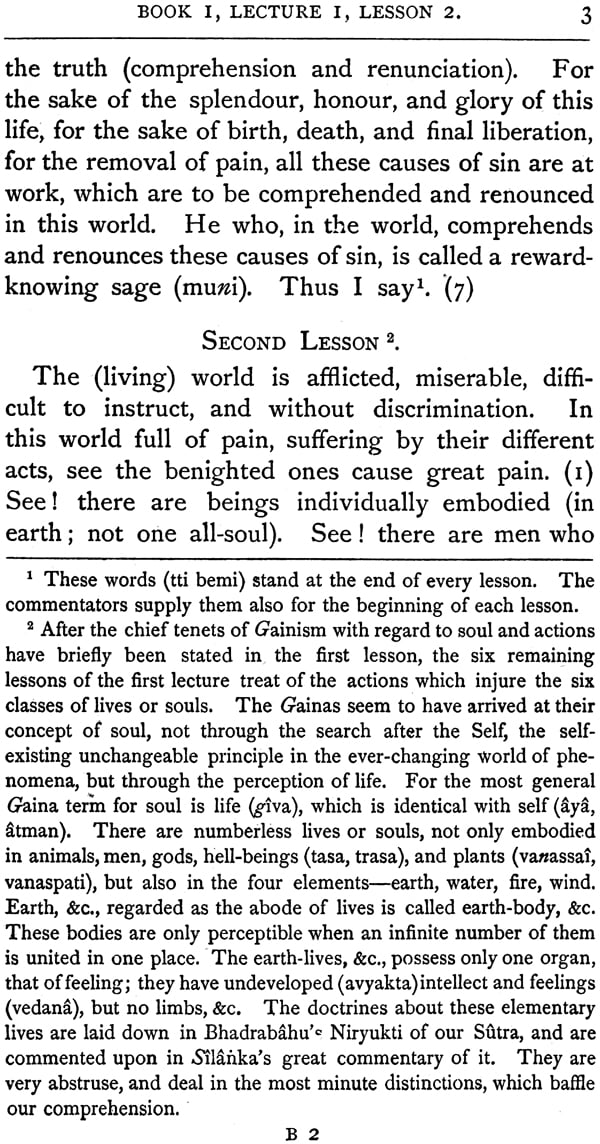

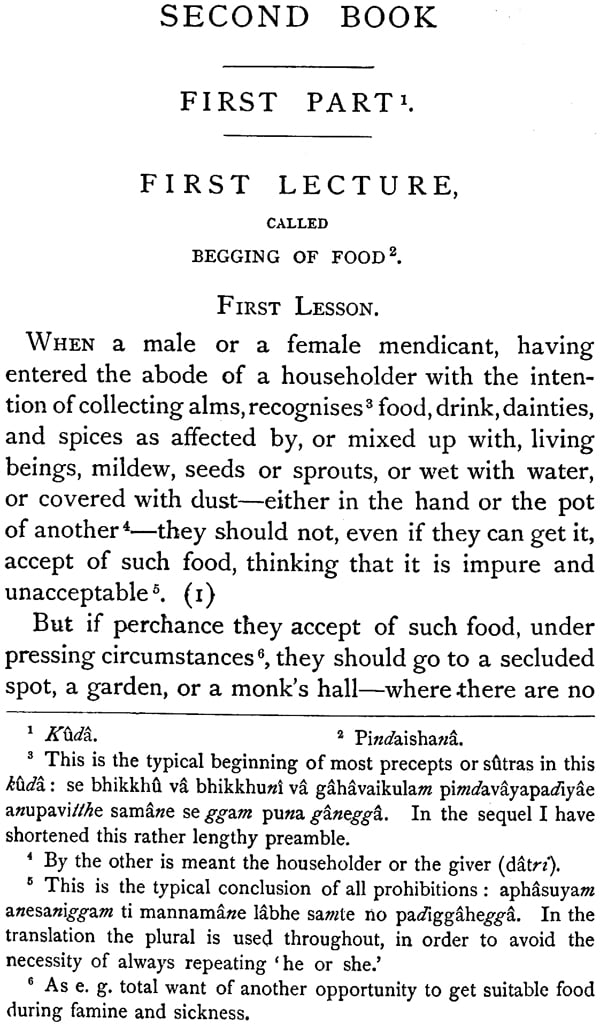


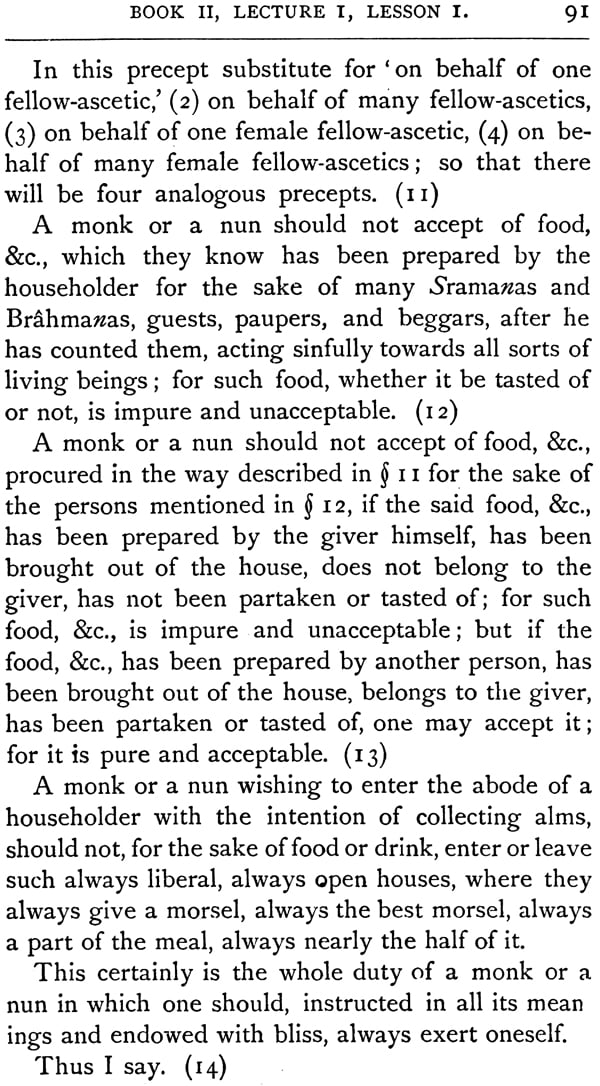
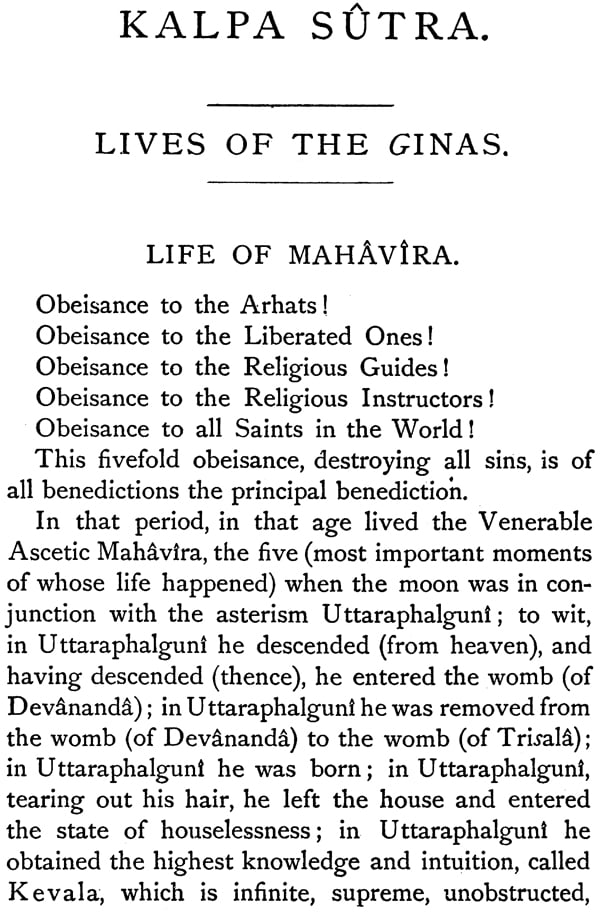
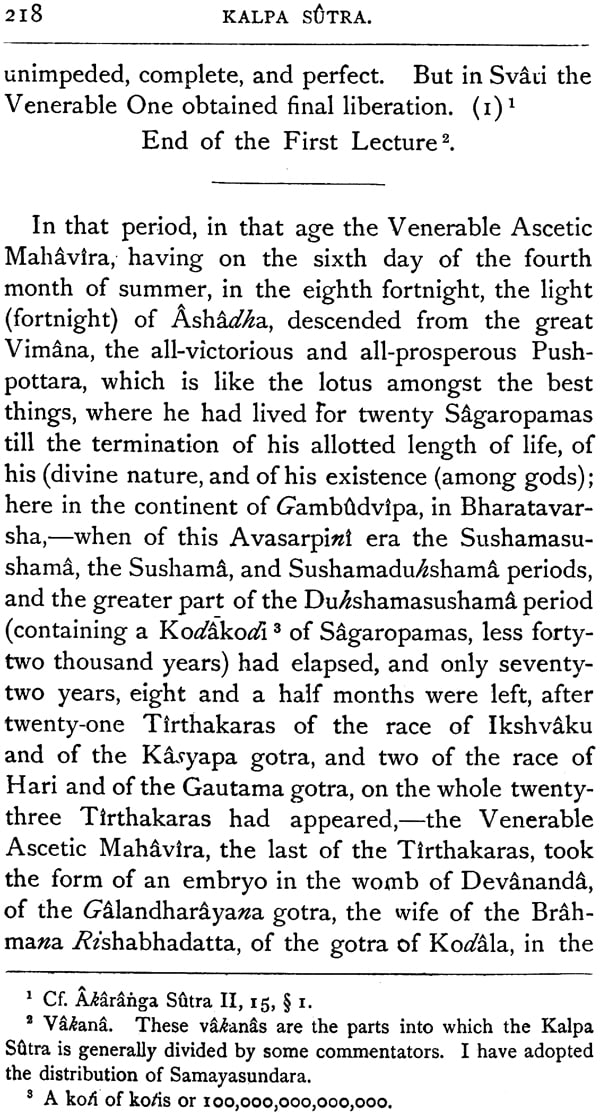

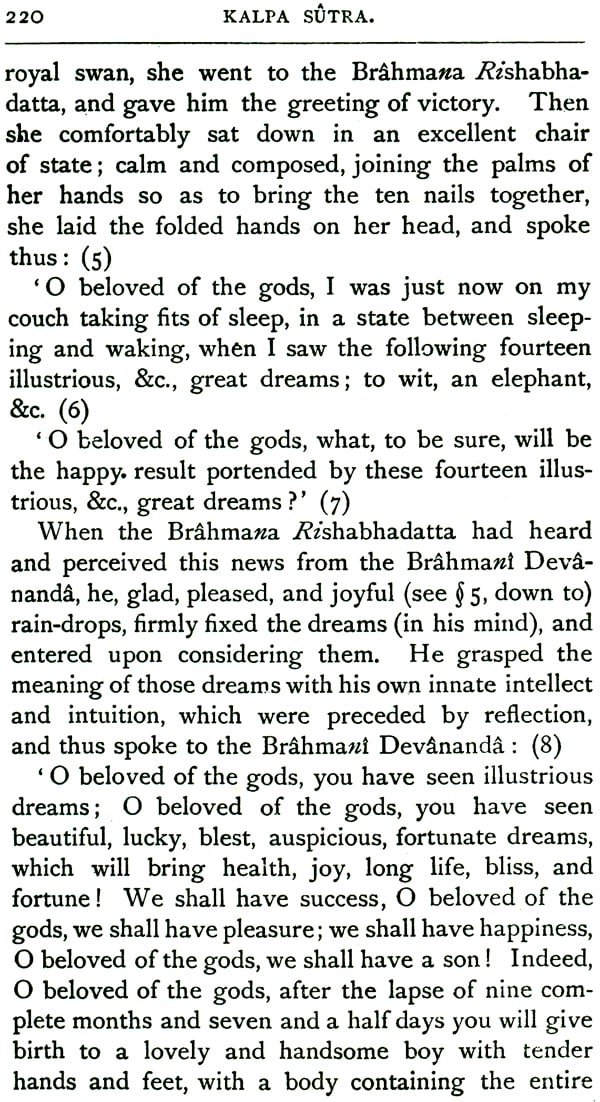
Delivery and Shipping Policy
- INTERNATIONAL SHIPPING
- Rs.1000-1100/kg
- ESTD. Delivery Time: 2-3 weeks (depending on location)
- Bubble Wrapped with Extra Padding
- NATIONAL SHIPPING
- NCR: Rs. 30/half kg
- Standard: Rs. 80/half kg
- Express shipments also available on Request
- ESTD. Delivery Time: Ranging from 1-4 days up to 7 business days (Depending on your choice of Delivery)
- TRACKING
- All orders; national or international, will be provided with a Tracking ID to check the status of their respective orders
- Depending on the Shipping Service, Tracking ID may be used on their respective tracking portals
Frequently Asked Questions (FAQs)
Domestic Shipping: 3-4 Days (after shipping)
International Shipping: 1-2 weeks (based on your location)
You will receive an email once your order has been shipped or you can email us if you didn't receive tracking details (info@mlbd.co.in)
Every book that we sell is the latest edition except all the rare books
Yes, we do provide free shipping, only on domestic orders (within India) above Rs.1500


